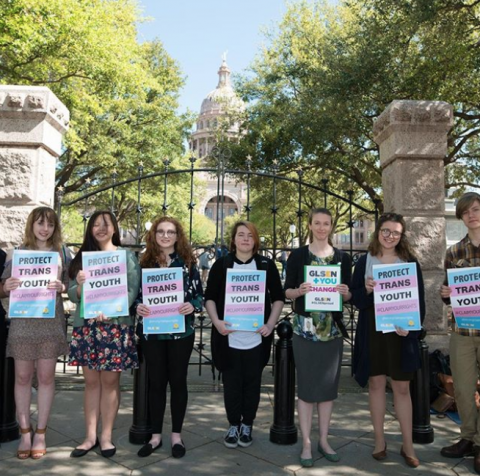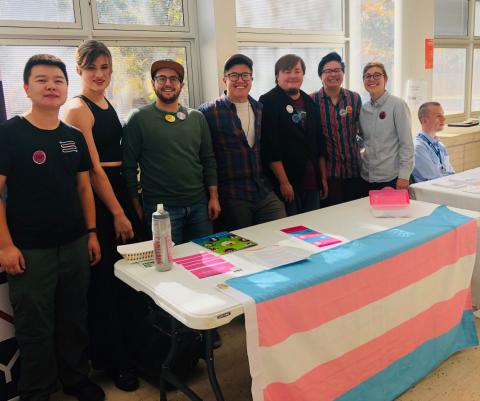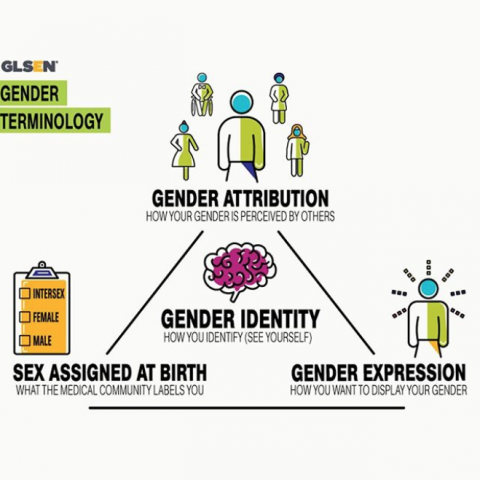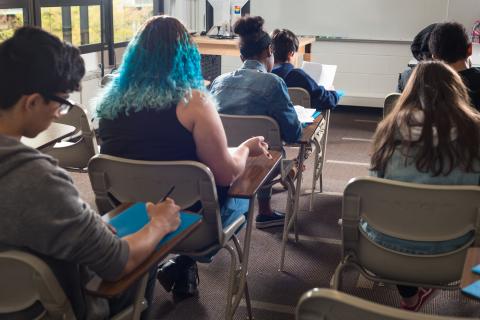
Trans and GNC Voices
Students
- What Does Allyship With Non-binary Students Look Like?
- I’m a Trans Student of Color. Supporting Me Means Fighting White Supremacy
- Educators Can’t Ignore Trans Students. Our Futures Depend on It
- I’m a Trans, Disabled Young Person, Not One or the Other
- What Happened When I Studied a Trans Civil War Soldier for History Class
- 4 Ways to Support Trans Students of Color
- 8 Affirmations from Trans Folks for Students Struggling with Pronouns
- Here’s Why Non-binary Students Need Allies
- 4 Toxic Messages I Learned About Gender (and 4 to Teach Instead)
- I’m Non-binary, and “Trans-Accessible” Restrooms Should Include Me, Too
- My School Failed to Protect Trans Students Like Me, so I Did Something About It
- When I Wore a Suit to Prom, My Teacher’s Response Was Perfect
Image

Educators
- 8 Questions with GLSEN’s Educator of the Year
- Follow Their Lead: How Schools Can Help Transgender Educators Thrive
- How Using Gender-Neutral Language Can Break the Silence of LGBTQ Students
- When I Came Out as a Trans Principal, This Was My School’s Response
- Advice on Making Trans-Inclusive Schools, from My Queer School Counselor
- Dear Trans Students, from a Trans Educator
- 6 Ways I Make My Science Class LGBTQ-Inclusive as a Trans Educator
- How Do We Make Math Class More Inclusive of Trans and Non-binary Identities?
More Voices
- These Trans and Gender Non-conforming Folks Share What They Need from Their Allies
- My 6-Year-Old Trans Daughter Wrote a Letter to the Court
- Gender-neutral Bathrooms Are Radical, but Not How You Think
- What School Was Like for Black and Latinx Trans Adults – and How to Improve It for Youth Today
Pronouns
Image

At the foundation of trans inclusion in school is an understanding of gender. GLSEN’s gender terminology guide and visual can help educators and students learn and lead discussions that can foster understanding of diverse genders.
Part of this understanding is recognizing the importance of gender pronouns. Learn more by exploring GLSEN’s pronoun resource, and offer pronoun buttons to make your school more trans-inclusive. You can also download and print pronoun stickers (he, she, they, blank) on Avery 5390 labels.
According to GLSEN research, compared to other students in the LGBTQ community, transgender and gender nonconforming students face more hostile school climates. To learn more, see GLSEN’s full research report and webinar on trans student experiences, and our report on trans students and school facilities, co-authored with Movement Advancement Project.
Transgender Awareness Week from November 11 to 19, Transgender Day of Remembrance/Resilience on November 20, and Transgender Day of Visibility on March 31 are important moments for trans inclusion, to create safe and inclusive schools for trans students. But making school trans-inclusive is a year-round effort.
Below is a wealth of resources that center trans and gender non-conforming students and educators. These resources share personal experiences and can help students and educators learn about gender diversity, pronoun visibility, trans students’ rights, and inclusive curriculum and GSA practices.https://www.glsen.org/media/oembed?url=https%3A//youtu.be/kq19QdOfH1Y&max_width=750&max_height=650&hash=JyGlf0i3xjO7Cwj41Z6aLIYDVshJTMogb8dMmJVhAqUhttps://www.glsen.org/media/oembed?url=https%3A//www.youtube.com/watch%3Fv%3DKQUQI0BrKnA%26feature%3Dyoutu.be&max_width=750&max_height=650&hash=2JVJkhV_Kf-sAFfpfa5CYCbgrBm7mKCcHWyaMjkEC5g
Looking for more? This educator webinar and GSA guide go deeper into how to support trans and non-binary students.
Trans Rights
Trans-inclusive school policies are critical to creating school environments that are safe and supportive for trans students. These tools can help you in advocating for these policies:
- Model District Policy on Trans and Gender Non-conforming Students
- Transgender Athletic Policy Brief
- Guide to Meeting with Decisonmakers
- 4 Big Problems with Anti-Trans Bathroom Bills — and How You Can Help Stop Them
To learn more about trans students’ rights, see GLSEN and ACLU’s Know Your Rights guide. If you face harassment or discrimination at school, make sure to #ClaimYourRights and report complaints to the U.S. Department of Education.

Classroom and GSA Activities
Trans students, like all students, thrive when they see themselves reflected at school. This means teaching lessons and activities that include and represent trans identities both in the curriculum and in meetings of LGBTQ student clubs.
Try out these activities:
- Learning Empowerment and Self-Identification
- That’s a (Gender) Stereotype!
- Identity Flowers
- Beyond the Gender Binary
- Misgendering and Respect for Pronouns
- The Breakdown: Exploring Transphobia and Genderism
- Trans Icons
- Authenticity and the Right to Tell Trans Narratives
- LGBTQ History Coloring Book, featuring trans icons from Sylvia Rivera to Laverne Cox
- Unheard Voices, an oral history curriculum project that highlights the stories of nine important people in LGBTQ history, including trans man Jamison Green
- LGBTQ History Timeline Lesson
Educators, want the latest resources sent to your inbox? Sign up for GLSEN’s Educator Network!
